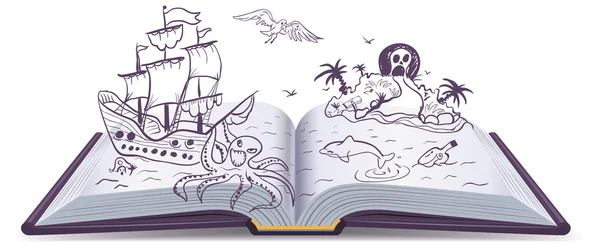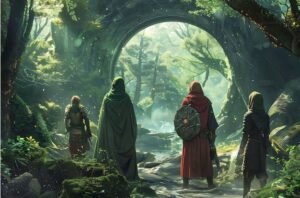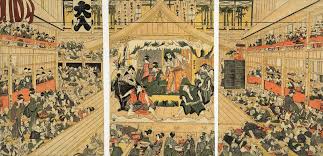Set Design: The Art of Creating Environments for Storytelling
The Practice Portfolio – Set Design focuses on creating environments that visually support a production’s narrative. These environments are categorized into organic and geometric types. Organic sets feature natural, flowing shapes inspired by nature, while geometric sets focus on symmetrical shapes, often reflecting man-made structures.
A well-developed Practice Portfolio – Set Design enhances storytelling by crafting immersive, believable worlds. This requires careful consideration of color, texture, and spatial arrangement to evoke the right mood and atmosphere.
World Building
Created by: @moderndayjames
The Role of Set Designer
Design Process:
- Conceptualization: Begin by creating initial sketches and brainstorming ideas.
- 3D Modeling: Utilize digital tools to visualize the set before physical construction.
- Construction: Build the physical set, carefully considering materials and spatial needs.
Responsibilities: A set designer must understand the narrative and character arcs, ensuring that every detail serves the purpose of the scene or character.
Designing for Storytelling
Symbolism in Set Design: Set designers use elements such as color, texture, and layout to reflect deeper themes or a character’s journey.
- Example: In The Great Gatsby, the opulent mansion mirrors the themes of wealth and decadence.
Mood and Atmosphere: The set design helps set the emotional tone of a scene, enhancing the story’s impact.
- Example: Dark, ominous sets in thrillers evoke tension, while bright, open spaces in comedies create warmth and comfort.
Creating Realistic or Fantastical Environments
Realistic Environments:
- Set designs for dramas or historical films strive for authenticity by using real-world references to create believable, relatable settings.
- Example: Schindler’s List used historically accurate set design to transport audiences to wartime Poland.
Fantastical Environments:
- Sci-fi and fantasy genres require sets that break the rules of reality. The challenge is to create these worlds in a way that feels believable to the audience.
- Example: The Lord of the Rings trilogy used elaborate miniatures and practical effects to create a grounded, yet fantastical Middle Earth.
Challenges in Set Design
- Budget Constraints: Budget limitations often force set designers to be resourceful in finding cost-effective ways to create the desired environment.
- Time Constraints: Tight production schedules can limit the time available for creating detailed sets, requiring quick problem-solving.
- Space Limitations: Designing within spatial constraints can be challenging, especially when large, complex sets are needed for a scene.
Set Design and Technology
Digital Tools: Modern set designers rely on 3D modeling software to create and visualize sets before physical construction, allowing for greater precision and creativity.
Virtual Reality & Augmented Reality: Virtual environments, such as those in The Mandalorian, use LED wall technology for real-time digital sets, providing endless creative possibilities.
Sustainability: With growing concerns about sustainability, eco-friendly materials and reusable sets are now prioritized in the industry.
Iconic Set Designs
Classical Examples:
- Gone with the Wind: The massive plantation home sets became iconic symbols of Southern wealth.
- The Wizard of Oz: The fantastical land of Oz was created using vibrant, elaborate set designs that still hold cultural significance today.
Modern Examples:
- The Lord of the Rings: The intricate designs of Middle Earth, including detailed miniatures and massive landscapes, immersed viewers in this epic fantasy world.
- Avatar: The lush, alien world of Pandora was brought to life using groundbreaking visual effects and set design that blended real-world and digital elements.
How to Get into Set Design
Education & Training:
- Aspiring set designers can pursue degrees in set design, theater production, or related fields. Specialized courses in architecture and interior design can also provide a foundation for set design.
Building a Portfolio:
- It’s essential to have a portfolio that showcases your design work, including conceptual drawings, models, and completed sets.
Industry Experience:
- Gaining practical experience through internships or assistant roles on productions is a great way to learn the ropes of the trade.
Famous Schools:
- Institutions like the California Institute of the Arts and the Royal Academy of Dramatic Art offer prestigious programs in set design and production.
Objective
Create a visually engaging storytelling set for a fantasy adventure setting.
Instructions
- Theme: Imagine a magical forest with elements like glowing mushrooms, enchanted trees, and a mystical portal.
- Requirements:
- Design the background (e.g., forest, mountains, sky).
- Include at least three props (e.g., a treasure chest, magical orb, or ancient ruins).
- Add lighting effects to create a mystical atmosphere (e.g., soft glows, shadows).
- Deliverables:
- Submit a top-view layout of the set.
- Provide detailed sketches or digital mockups of the scene.
- Write a 150-word description of the storytelling elements used in your design.
Design Tools/Methods
Use tools like Procreate, Blender, Adobe Photoshop, or create hand-drawn designs with markers and pencils.


Objective
Design a storytelling set inspired by a historical period, such as the Victorian era or medieval times.
Instructions
- Theme: Choose a specific historical event or setting (e.g., a royal courtroom, medieval market, or Victorian study).
- Requirements:
- Include era-specific props (e.g., scrolls, vintage furniture, or weapons).
- Focus on the architectural elements of the set (e.g., gothic arches, wooden beams).
- Use color schemes and patterns reflective of the chosen era.
- Deliverables:
- Create a perspective sketch or digital rendering of the set.
- Include a brief mood board showing inspirations and color schemes.
- Submit a 200-word explanation of how the set conveys the story’s historical context.
Design Tools/Methods
Use tools like SketchUp, Adobe Illustrator, or hand-drawn techniques to bring your vision to life.

Report abusive, offending, missing or broken link report@prodesignschool.com
Join Our Mail List
To get latest updates on courses and news regarding education.